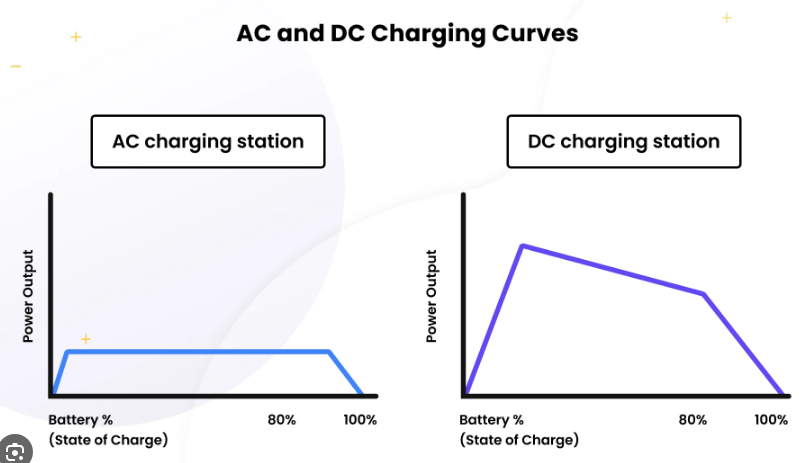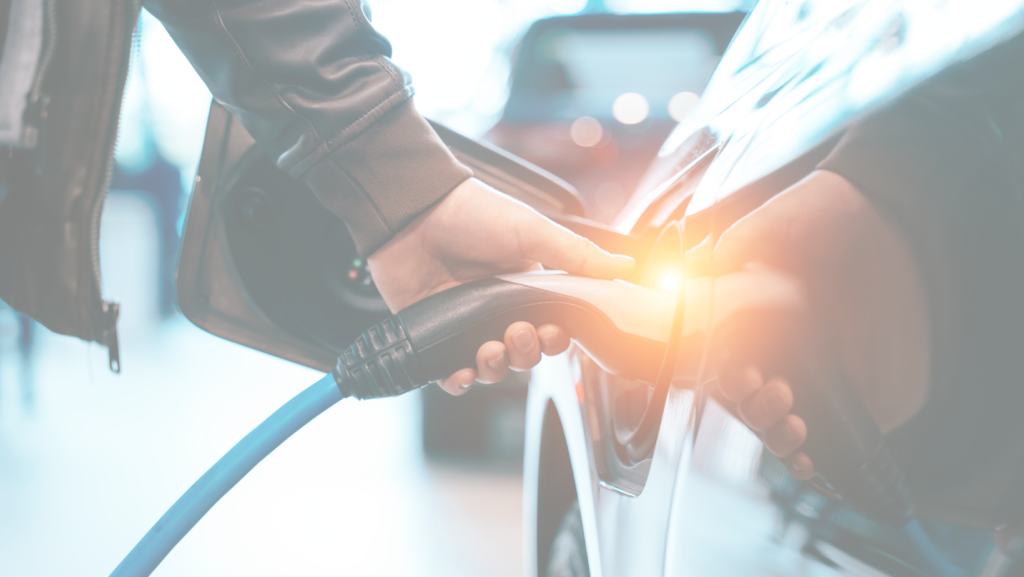AC vs DC chargers
The primary element of an electric vehicle is its electric motor, which draws power from an electric battery. Notably, these batteries are designed to store only Direct Current (DC) charge. However, two predominant methods to replenish these batteries are utilizing an Alternating Current (AC) charger or a Direct Current (DC) charger. This blog will comprehensively analyse the differences between AC and DC chargers and their respective charging processes.

Understanding AC Charging for EVs
AC EV Chargers accept Alternating Current (AC) as input and supply AC output. These chargers function as regulators and controllers, delivering the charge in AC mode to the vehicle’s onboard charger. This onboard charger in the car converts the AC power into Direct Current (DC) to charge the battery. AC chargers are valued for their smart operation capabilities, including metering, data analytics, safety features, earthing, and various checks.
They are particularly well-suited for residential use and overnight charging. The charging speed of these units typically ranges between 3.3 kW and 22kW per hour. EV charging stations offer a critical infrastructure for powering electric vehicles, seamlessly integrating advanced technology to cater to the growing demand for sustainable transportation.
AC chargers can be categorized into two distinct types:
Type 1:
These chargers offer a charging rate ranging from 2.5kW to 3kW. The duration required for a full charge varies from 1 to 6 hours, contingent on the battery capacity.
Type 2:
These chargers deliver a more robust charging rate, between 7.7 kW and 22 kW. These are primarily employed for charging batteries that necessitate higher power inputs.
Advantages
- They are readily available
- Cost-effective
- Simple Installation
- Provides a consistent charging rate
DC Chargers
The battery receives direct DC power in DC chargers, bypassing the onboard charger. The DC charger incorporates a converter, transforming the AC supply into DC before delivering it to the battery. Charging speeds typically fall within 30-120kW per kilometre per hour, providing a more specific measure of supplying over 100 km per hour.
DC fast charging is primarily deployed along highways and at dedicated DC Charger Stations. It is imperative for vehicles with high mileage, extensive fleets, and heavier loads. The charging curve exhibits a degrading pattern, indicating a gradual reduction in the initial rapid rate at which the battery accepts power as it nears its full capacity.
Advantages
- High Charging speed
- Enhanced capacity to charge a greater number of drivers every day
Charging curves of AC vs DC chargers

Where to Find Optimal AC and DC Chargers:
For superior AC charging solutions, consider exploring the Ryze AC Charging Stations range, which includes the efficient RYZE 3 x 3.3KW AC Charging Station and the versatile 7KW and 22KW Type 2 AC Charging Stations. For your DC Charger Station needs, the Shyne DC Charging Stations Lineup offers a range of options tailored to diverse requirements, including the 30kW Single Gun CCS2 DC charging station, the 30+30 Dual Gun CCS2 Charging Station, and the robust 60/90/120 KW CCS2 Charging Stations.

AC vs DC chargers – Summarised
| Parameter | AC Charger | DC Charger |
| Charging Current | Supplies AC Current to On-board Charger | Supplies DC current directly to batteries |
| Charging Speed | Typically constrained by the capacity of onboard chargers | Charging speed is high and contingent upon the capacity of the DC charger and the battery’s voltage |
| Cost | Comparatively Cheaper | Costs Higher |
| Applications | Commonly utilized in home or destination charging setups, particularly for overnight charging | Typically employed at mid-journey stops, traditional fuel stations, and other rapid charging sites |
An Overview of the Dual Charging Methods for Electric Vehicles: Implications for Users
Electric vehicles (EVs) store energy exclusively as direct current (DC) yet can be charged using both alternating current (AC) and DC sources. When charging with AC, an in-built converter in the EV transforms the AC into DC for battery storage, a process that is generally slower than DC charging due to the conversion required.
AC charging is standard in home environments, typically at lower speeds. In contrast, DC charging at public stations offers rapid or ultra-fast charging without the need for conversion, resulting in quicker charging times. The efficiency and speed of charging, especially with DC, can vary depending on the EV’s model and the charger’s capabilities.


